Ludwigsburg Castle
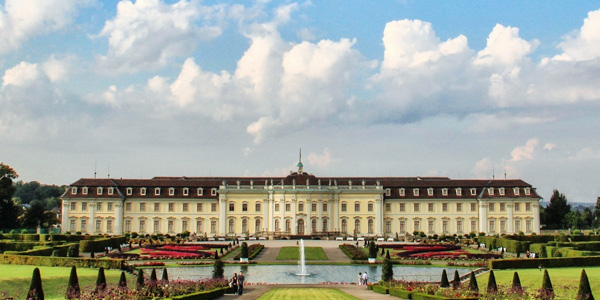
Residenzschloss Ludwigsburg. (Photo by Daniel Petzold)
The Versailles of the Wurttemberg dynasty is a massive baroque palace 20 minutes north of Stuttgart
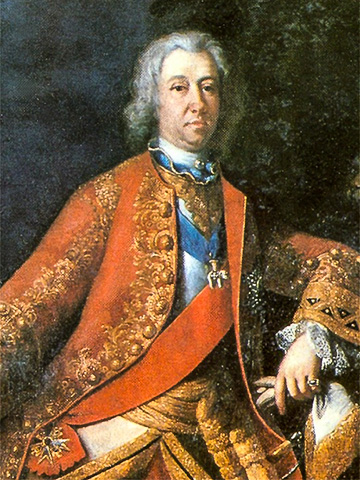
Portrait of Duke Eberhard Ludwig.
Sometimes a little destruction can be a good thing.
After the French destroyed the Württemberg family's old hunting lodge 12km north of Stuttgart in 1697, Duke Eberhard Ludwig decided to build in its place a grand baroque palace—or, rather, collection of palaces—and a town to go with it.
He liked it so much, he moved the Ducal court there in 1718, and the town went on to become a cultural capital renowned for producing German literary and philosophical talents.
The palaces lie east and north of the sprawling Marktplatz in the center of town.
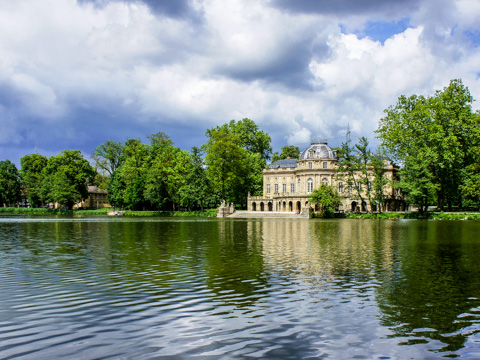
Schloss Monorepos in Ludwigsburg. (Photo by barnyz)
The complex is divided into three sections:
- The sprawling main Residenzschloss surrounded by the Schlosspark gardens;
- The Schloss Favorite, an over-the-top hunting lodge in a wooded park just to its north;
- The Seeschloss Monrepos, a lakeside retreat north of the city center that is now privately owned, though the grounds are open as a park (which also includes the town's top hotel).
Residenzschloss Ludwigsburg
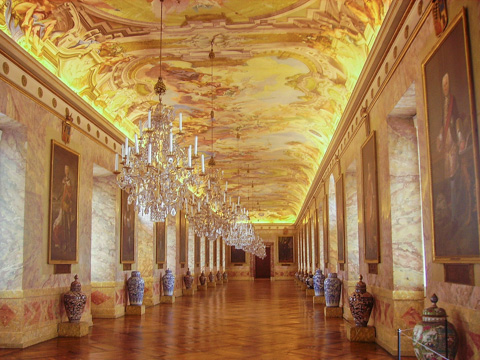
Ancestor's Gallery of Ludwigsburg Palace, Ludwigsburg. (Photo by Zairon)
The pale-yellow baroque quadrangle of the main palace was built in 1719–33 by Donato Giuseppe Frisoni to house the ducal court in the best Baroque and Rococo frippery ducal money could buy.
Frescoed ceilings, crystal chandeliers, parquet floors, and a Neoclassical theater (with the world's first revolving stage) fill the 452 rooms—most of them decorated and furnished by Ludwig's successors, who immediately moved the court back to Stuttgart upon Ludwig's death, but kept this palace for country getaways
(Don't worry; you only visit a few dozen rooms on the required guided tours—daily in English at 1:30pm, plus weekends at 11am and 3:15pm in summer; otherwise, you get translations to carry on the German tours.)
There is a fine little Theatermuseum about that theater, and as of 2004, four smaller museums you can visit at your own pace: One of ceramics and another of fashion (both covering the 18th to 20th centuries), the private apartments of Duke Carl Eugen, and a Baroque Gallery of art.
The surrounding 32 hectares (79 acres) of parks and recreated baroque gardens alone are worth an hour's stroll at least.
Schloss Favorite
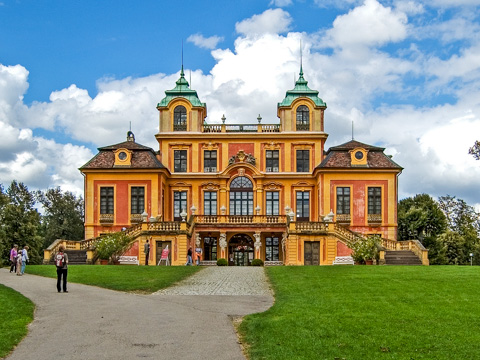
Schloss Favorite in Ludwigsburg. (Photo by Wagner Tobias)
This fanciful 1717–23 mini-palace was the replacement for that old hunting lodge, a bachelor's pad for Ludwig and his buddies to relax away from the rigors of court and dealing with the womenfolk—and to hunt pheasant in the surrounding Favoritepark (converted by later Württemberg dukes and kings into a deer park).
Most of the original interior baroque trappings are gone (save for one room), replaced in a Neoclassical remodel under King Friedrich I in the early 19th century.
Tips & links
Residenzschloss Ludwigsburg
Schlossstraße 30, Ludwigsburg
Tel. +49-(0)7251-742-770
Schloss-ludwigsburg.de (for the Residenzschloss)
Open daily 10am–5pm
TOUR REQUIRED
Guided tours in English: daily at 1:30pm (mid-Mar–mid-Nov, also Sat–Sun at 11am and 3:15pm)
Guided tours in German (with English translation papers): Every 30 min.
Bus: 421, 427, 443, 444
Schloss Favorite
Favoritepark 1, Ludwigsburg
Tel. +49-(0)7141-182-004
Schloss-favorite-ludwigsburg.de
Open daily 10am–noon and 1:30–5pm (to 4pm winter)
TOUR REQUIRED
Guided tours (in German with English translation text) every 30 min.
Bus: 421, 427, 430, 443, 444
To tour both Schlosser, the museums, and the gardens and parks, set aside a good half a day.
If you're an English-speaker, start with the Favorite, then its park, then the Residenzschloss gardens so you will be ready for the Residenzschloss tour at 1:30pm.
- Stuttgart tourist info:
- Stuttgart-tourist.de
- Baden-Württemberg tourist info:
- Tourism-bw.com
- Germany.travel
- Activities & tours:
- Viator.com
- ContextTravel.com
- Intrepidtravel.com
- Gadventures.com
- Infohub.com
- City-Discovery.com
- Localguiding.com
TRANSPORT
- Airfares:
- Momondo.com
- AutoEurope.com
- Vayama.com
- CheapOair.com
- Cheapflights.com
- DoHop.com
- CheapTickets.com
- Priceline.com
- Airports:
- Stuttgart-airport.com, Fly-away.de (Lake Constance); Other airports within 200km: Frankfurt-airport.com, Euroairport.com (Basel), Munich-Airport.com, Zurich-airport.com
- Car/RV rentals:
- Autoeurope.com
- Momondo.com
- RentalCars.com
- CheapOair.com
- AutoSlash.com
- Trains:
- Bahn.de
- Raileurope.com
- Seat61.com
- Apartments & villas:
- Vrbo.com
- Booking.com
- Venere.com
- Rentalo.com
- Homeaway.com
- Belvilla.com
- Interhomeusa.com
- Airbnb.com
- Villasintl.com
- Craigslist.org
- Hostels & campgrounds:
- Hostelworld.com
- Gomio.com
- Hostelbookers.com
- HostelsClub.com
- Hostelz.com
- Booking.com
- Venere.com
- Agriturismo (farm stays):
- Landtourismus.de
- Bauernhofurlaub.de
- Booking.com
Related Articles |
|
This article was by Reid Bramblett and last updated in July 2014.
All information was accurate at the time.
Copyright © 1998–2013 by Reid Bramblett. Author: Reid Bramblett.
Residenzschloss Ludwigsburg
Schlossstraße 30, Ludwigsburg
Tel. +49-(0)7251-742-770
Schloss-ludwigsburg.de (for the Residenzschloss)
Open daily 10am–5pm
TOUR REQUIRED
Guided tours in English: daily at 1:30pm (mid-Mar–mid-Nov, also Sat–Sun at 11am and 3:15pm)
Guided tours in German (with English translation papers): Every 30 min.
Bus: 421, 427, 443, 444
Schloss Favorite
Favoritepark 1, Ludwigsburg
Tel. +49-(0)7141-182-004
Schloss-favorite-ludwigsburg.de
Open daily 10am–noon and 1:30–5pm (to 4pm winter)
TOUR REQUIRED
Guided tours (in German with English translation text) every 30 min.
Bus: 421, 427, 430, 443, 444
